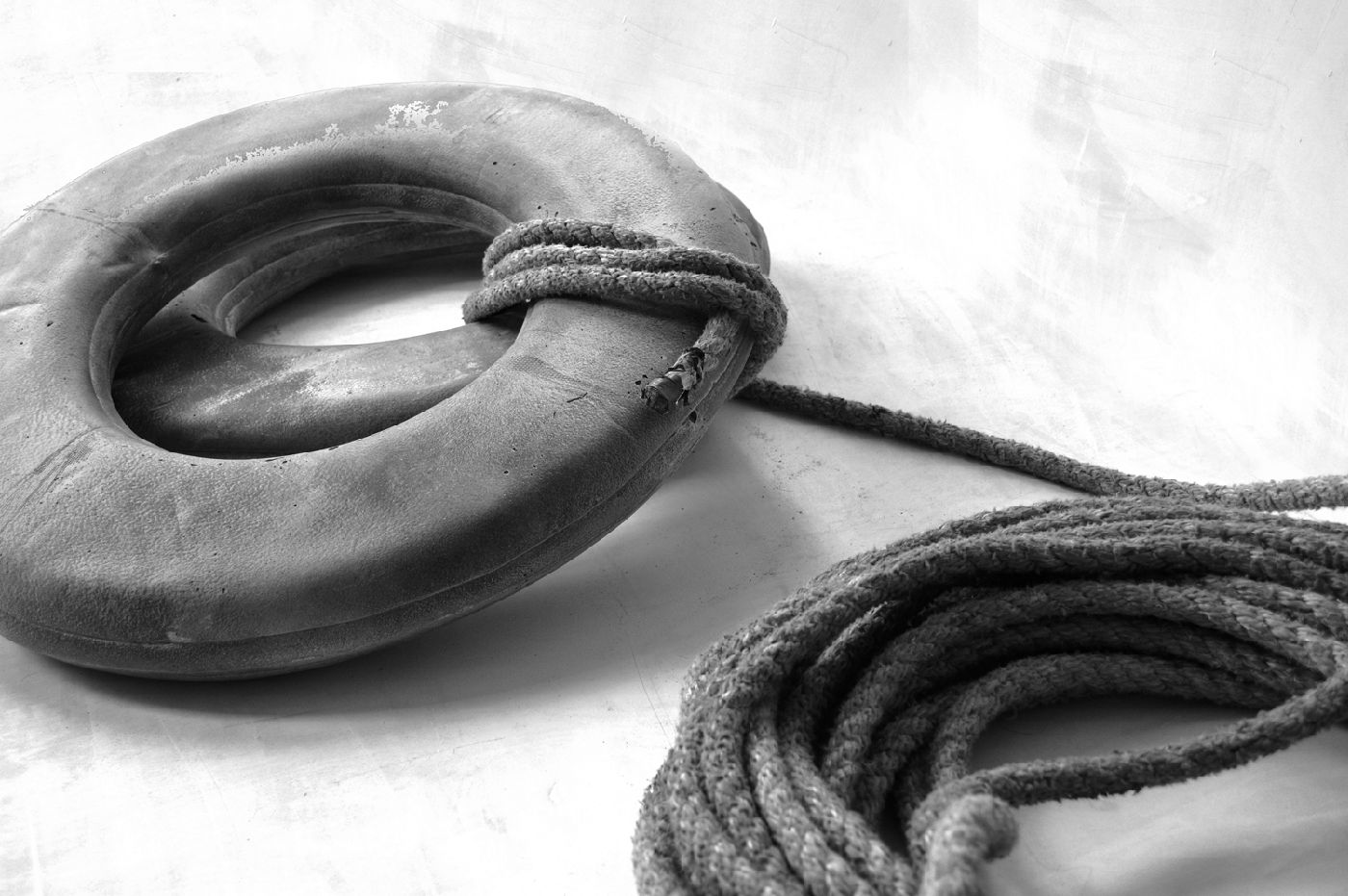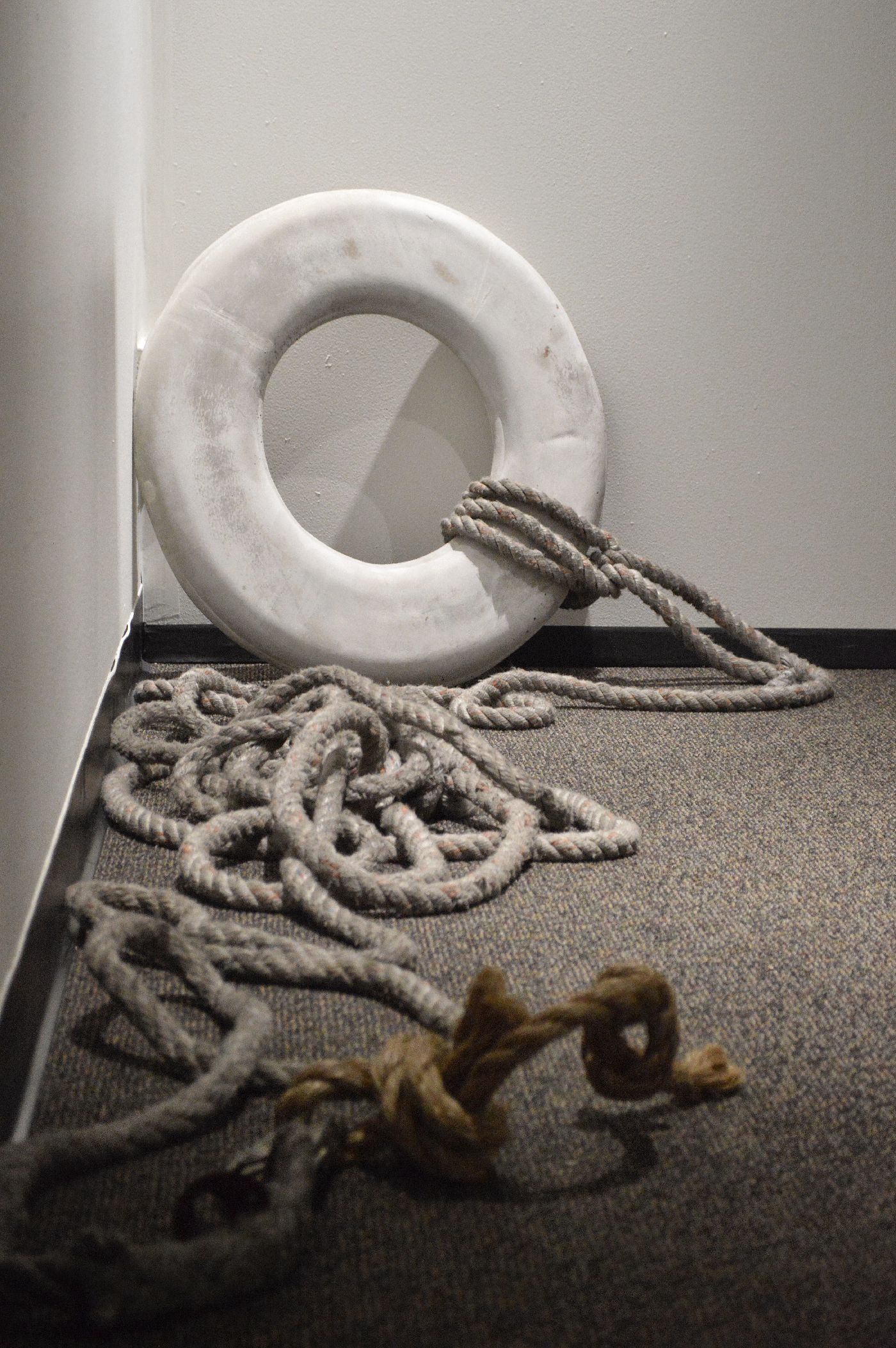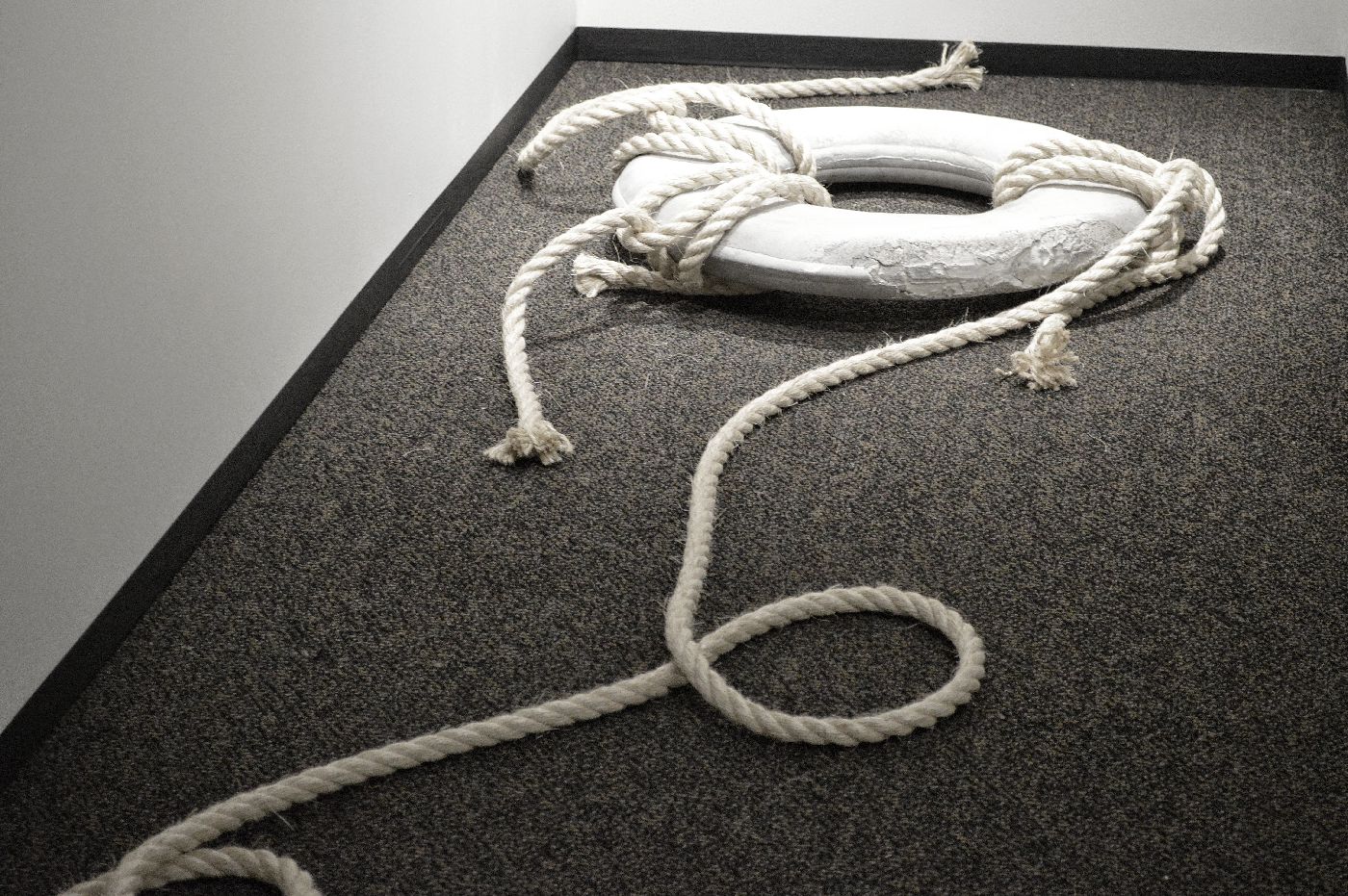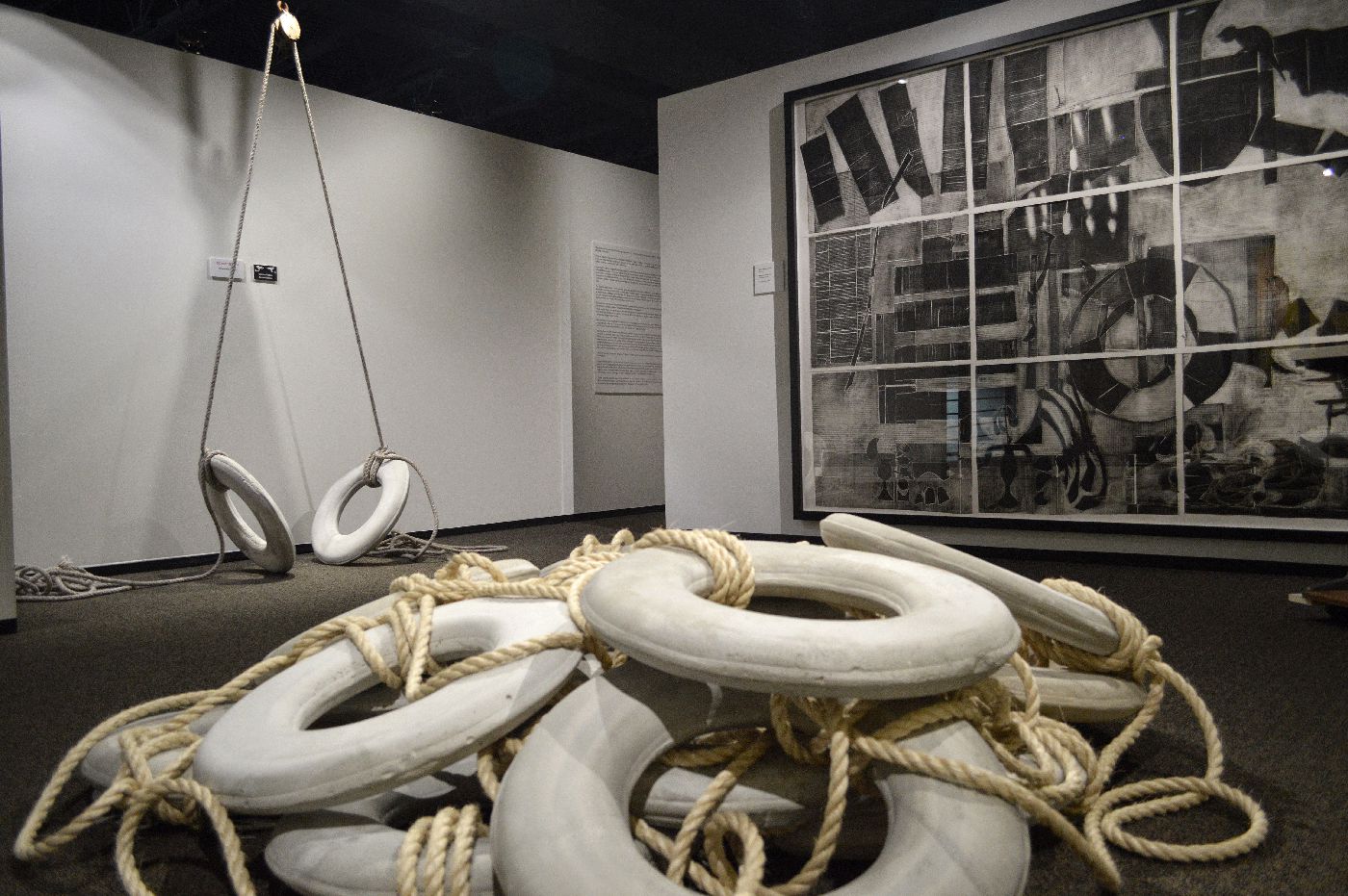
HOPE
The product of my genius and my misery, and that which I have [created] in my greatest distress, is that which the world seems to like best. —Schubert
“Hope is integral—some is collected, some is inherited. I want, I think we all want, for it to be a simple, beautifully elegant thing, but the more you draw from it, it begins to look more like despair, or re-purposed despair. There is a similar reasoning behind starting a new work of art.”—Shapira
Aithan has "cast" a universal symbol from an abandoned life preserver. TAsking what hope looks like today, the weight of Shapira’s subject matter spans more than a decade across three continents tackling conflicting fields of view and encouraging us to consider the ways in which one object can take on different meanings. Over the years, the abandoned life preserver has evolved in his work: one cut from discarded cardboard, another painted in a fox trap, and in this series, he recast hundreds in concrete - a distressing offer for those whom it is too late to save.
For Aithan, the notion of hope, both its presence and its absence, is the anchor of our motives, one strong enough to spark the aspiration to end wars and the catalyst to begin them. In his concrete pieces, we find both a call to action and a challenging inability to act, a contradiction as stark as that of the material and its form. He offers, “My work is not about me, it is a mirror of us, and it does not show what we are but reflects what we can become.”




"I’ve cast concrete flotation devices that maintain a permanent inflatedness, yet they would kill rather than save. Making a concrete life preserver is both a creative act and a communicative, sensual one.
In the studio there is a conflict against the real and against the unreal, the fight against the abstract part of art—the not visible—and the things that do not go together yet must. In this active negotiation, hope is present in abundance, and the conflict is similar outside the allegory of the studio.
We understand hope as a positive recognition—or a negotiation—of an always incomplete imperfection. We confront this palpable, heavy form we construct both individually and in the communities we create. These concrete life preservers were constructed while asking what hope looks like, visually and physically, today.
Making these concrete preservers in the studio has been like plotting some action or revolution, at times not knowing when you will truly be prepared. When I was living in London as a student at the Royal College of Art, I would regularly walk across the Thames via Hungerford Bridge. On an adjacent pillar supporting the bridge, and out of any possible human reach, rotted an abandoned life preserver. The poetry of the scene had me drawing on site for hours each week. These notebook drawings translated to eight-foot drawings on canvas, and eventually into similarly-sized collographs and etchings printed on presses that were given to the Queen in the early 1850s. After four years, each life preserver was another confession. Even as prints that began as the three-foot reliefs in cardboard, they were limited in dimension, literally being flattened. I needed to lift them, and for them to be heavy.
‘Nested’, ‘Coupled’, ‘Shattered’, ‘Balanced’, ‘Reused’—these are the ways we negotiate hope. Hope is also a reason to begin the next work of art."

CONTACT: aithan@aithanshapira.com